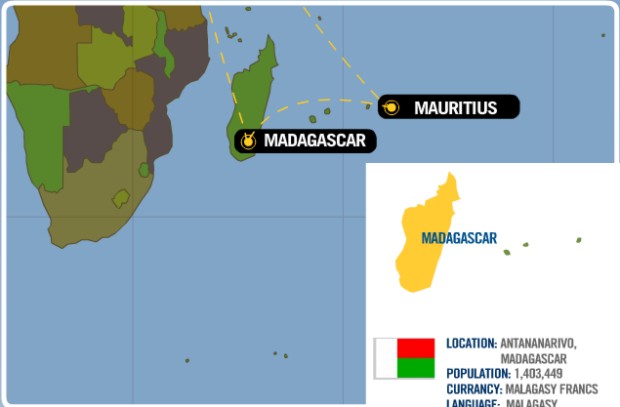|
|
 |
|
|
 |
 |
 |
 |
 |
|
Madagascar is an Eden-like garden, filled with a diversity of life and geography unequaled anywhere else on the planet. Founded in 1624 AntanÓnarývo, also known by its French name Tananarive, is the capital of Madagascar. The city is situated 90 miles from the eastern coast and is the largest settlement on the island. Built along a long and narrow rocky ridge extending north and south for about 2Ż mile, AntanÓnarývo occupies a commanding position and view over the surrounding region.
AntanÓnarývo contains numerous structures of architectural interest including the royal palaces, houses formerly belonging to the prime minister and nobles, the French residency, the Anglican and Roman Catholic cathedrals, and several stone churches. The arrival of the French in 1895 saw the incorporation of the island into the French Madagascar protectorate. The French conquest was not all bad news though, as good roads were constructed throughout the city, broad flights of steps were built to connect places too steep for the formation of carriage roads, and the central space, called Andohalo, became a handsome European-inspired park with walks, terraces and trees. Antananarivo hosts one of the most important and largest markets in the world: the zoma (Friday in Malagasy). Visitors have the opportunity to discover Malagasy handcrafts, leather goods (crocodile, snake skin, leather), wood sculptures, and local culinary delights. Madagascar, with its many quiet coves and its proximity to the Indian Ocean trade routes, was a haven for many of the most famous pirates to sail the seven seas. As a result, the region abounds with stories of buried treasure and the swashbuckling buccaneers' adventures have become a colorful part of the national folklore.
|
|
|
Natural Wonders and Wildlife
Madagascar is a haven for visitors wanting to experience a land where time seams to have stopped, where animals and plants flourish and thrive and man coexists easily. The animal residents of Madagascar thrive on plentiful foodstuffs, and an almost total lack of predators. Because the evolutionary pressures on Madagascar's early inhabitants were almost nonexistent, the island literally teems with life forms that have changed little in hundreds of thousands, even millions of years.
The Prime Minister's and Queen's Palace
The Prime Minister's Palace in Manjakamiadana is well worth exploring. Along with the Zoological Park and its museum, the Astronomical Observatory in Antananarivo University and the Croc farm are also must-see sights in the beautiful city. The Queen's palace towers above the city on a hill built by King Andrianjaka for his citadel, the Rova. A fire destroyed the structure in 1995 and it has yet to be reconstructed.
Food
Visitors to shouldn't miss out on the chance to try the national snack: Koba, a pate of rice, banana, and peanut. Seafood is also another obvious specialty, such as a plateful of luscious ginger-and-lime flavored crab and lobster meat, resting on a bed of fresh greens. Don't miss other dishes including Akoho sy voanio, a local chicken dish prepared with rice and fresh coconut, and Foza sy hena-kisoa, a stir-fried crab, pork, and rice dish.
Zomas
The Petite vitesse market is located next to the AntanÓnarývo train station, and arouses great curiosity because of the hundreds of little benches upon which all sorts of tropical or European vegetables or fruits on display. You can also find a section dedicated to medicinal plants. There are several other markets or Zomas in the capital: Soarano-Camp Pochard (varied handcrafts), Andravoahangy (embroidered tablecloths and curtains, pieces of wood sculpture, semi precious stones), Anosy (fresh and dried flowers, pottery), La digue (mixed handcrafts).
|
 |
|
|
 |
 |
 |
|




